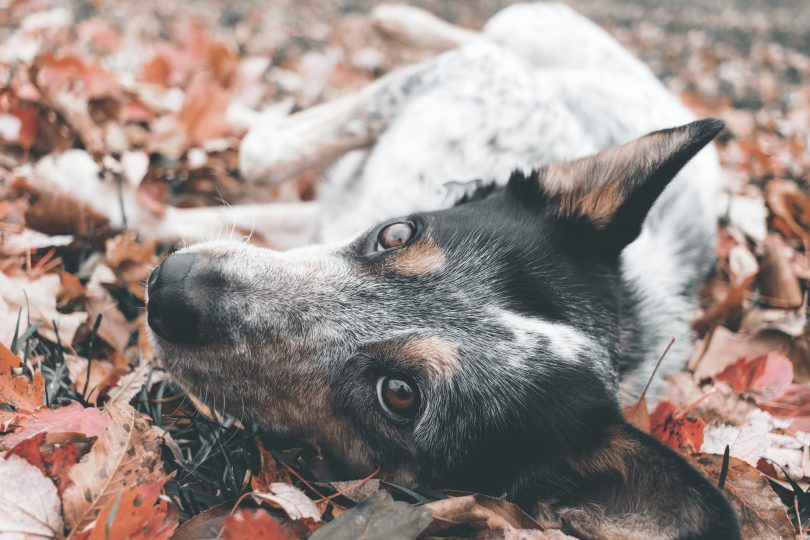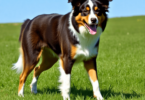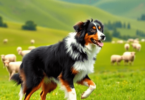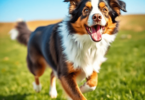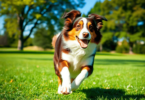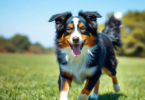If you’ve been thinking about adopting a dog and are looking for an energetic breed with a high level of intelligence, an Australian cattle dog might be the perfect fit for you.
However, before adopting an Australian cattle dog (Also known as a blue heeler, red heeler, Queensland heeler, or ACD) there are some important things you should take into consideration.
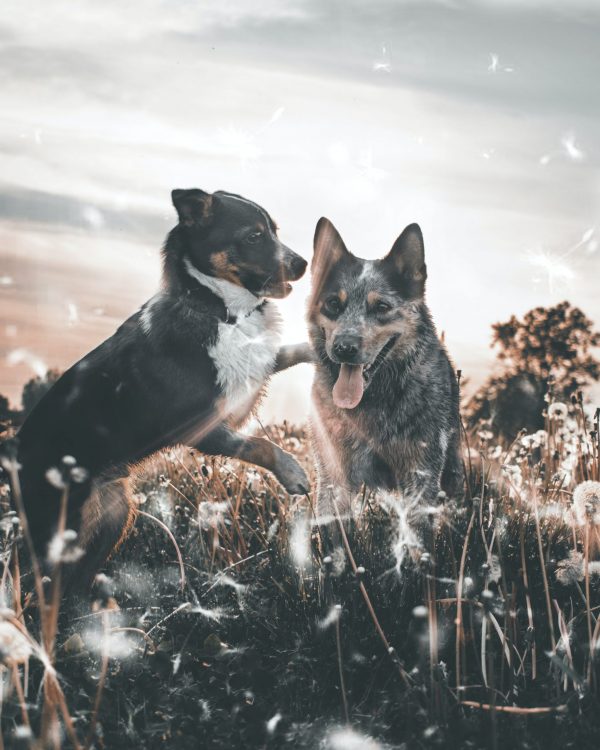
Australian Cattle Dog Adoption
1. History
2. Temperament
3. Health Issues
4. Lifespan
5. Size
6. Grooming Needs
7. How Much Do They Shed?
8. Behavior Issues
9. Training
10. Toys
1. History
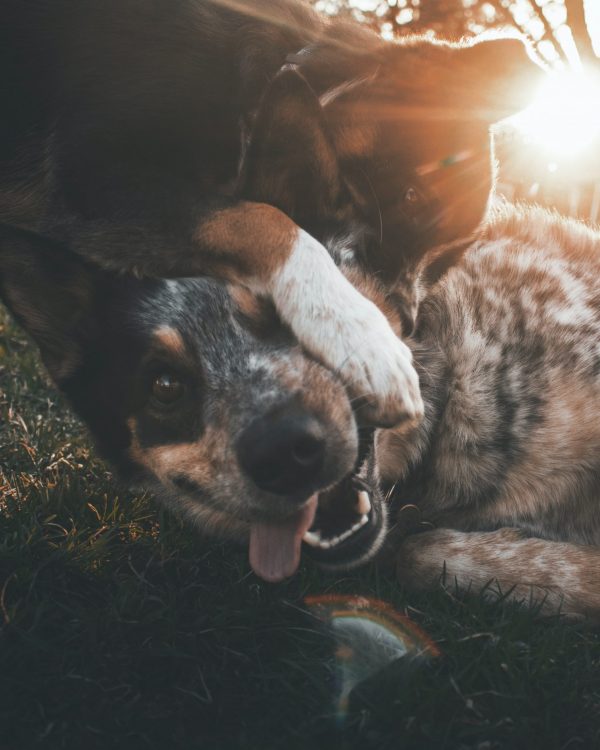
Due to Australian being in their name, it should be no surprise that these dogs originated in Australia. However, how the breed came into existence is a bit surprising. Interestingly enough, cattle dogs are the result of cross breeding tamed dingoes with Dalmatians. This created a dog with either red or blue speckles that was an incredible working dog. However, more favorable characteristics were desired. Therefore, these speckled dogs were then crossed with sheep dogs. The result is what we know today as the Blue Heeler.
2. Temperament
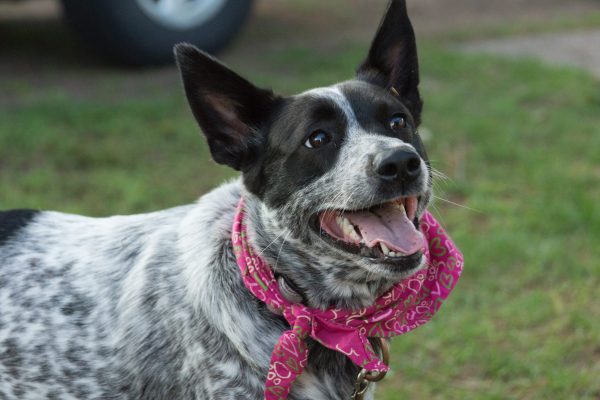
This breed has an amazing temperament which allows them to easily fit in well with most families, even those with children. They are loyal, protective, energetic, outgoing, and incredibly intelligent. They are also well known for being affectionate with their humans.
Being bred as a working dog, it’s in their nature to want to get up and move around. Therefore, they may not be the best breed for a person that is looking for a buddy to lounge around with. Also, their history makes them quite territorial which can lead to barking when strangers come around. This should be no surprise though since they were bred to protect herds.
You should be aware that these fur babies have a strong prey drive. In most cases, this shouldn’t cause any issues. However, those living in a home with cats or other small animals may want to consider a different breed.
3. Health Issues
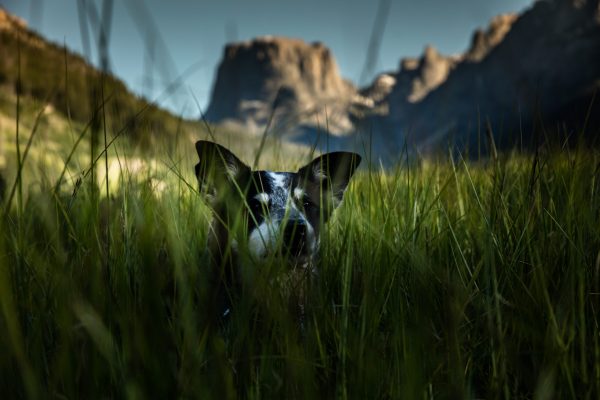
While American cattle dog health issues are typically minimal, there are some health concerns you should be aware of. The most common health issues this breed experiences are progressive retinal atrophy, cataracts, deafness, and hip dysplasia. Less common health concerns include liver shunts, pupillary membranes, and a blood condition referred to as von Willebrand’s disease.
It’s important that you keep an eye on the wellbeing of your furry friend and look for any signs of these conditions. Remember, the quicker something is done to treat them the better. In many cases, progression of these issues can be greatly slowed or even stopped. It’s also important that you understand that signs of these conditions may not always be obvious, especially to the untrained eye. For this reason, regular vet visits are definitely recommended with this breed.
4. Lifespan
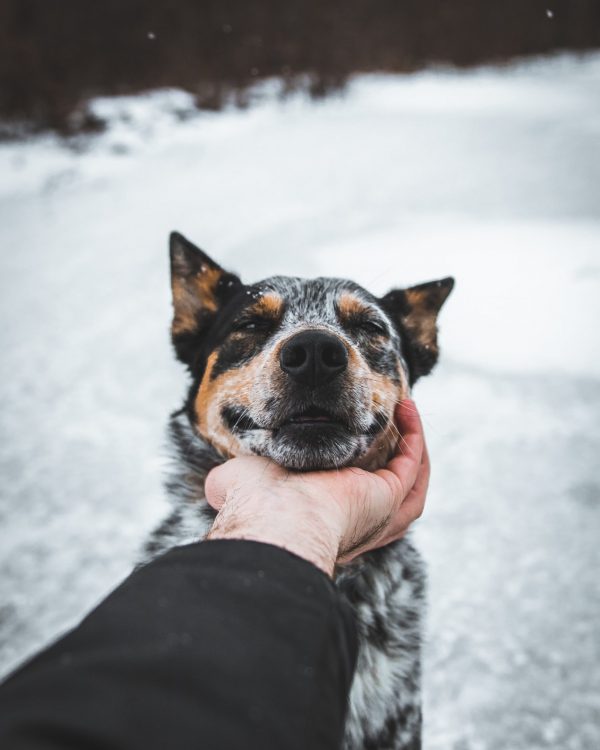
Typically speaking, ACDs live between 13-15 years. However, this is just a general lifespan. Some can live much longer.
Here’s a fun fact. Did you know that the Guinness World Record holder for the world’s oldest dog is held by an ACD named Bluey? Shockingly, Bluey lived to be 29 years old before passing away in 1939. He spent more than 20 years herding and protecting sheep as well as cattle during his lifespan.
5. Size
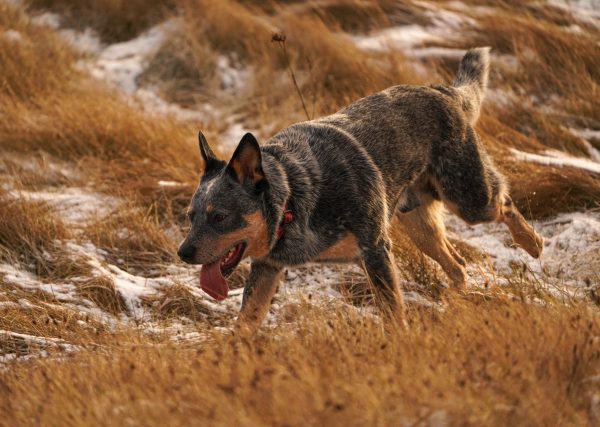
ACDs are a medium sized breed. Generally speaking, full grown males will stand between 18-20 inches and weigh between 33-35 pounds. Females tend to be a bit smaller. A full grown female ACD will typically stand between 17-19 inches and weigh between 31-35 pounds.
6. Grooming
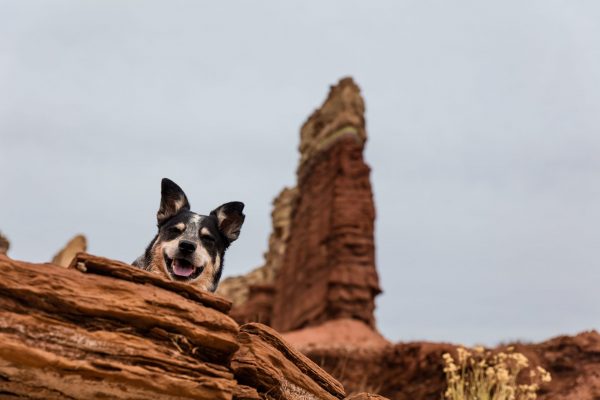
ACDs are rather low maintenance when it comes to grooming needs. In fact, baths are only needed every other week. However, when bathing them it is important to work the shampoo in thoroughly to help promote a healthy coat and skin. It’s also important to use a light conditioner to keep your furry friend’s coat hydrated and manageable.
7. Do Blue Heelers Shed?
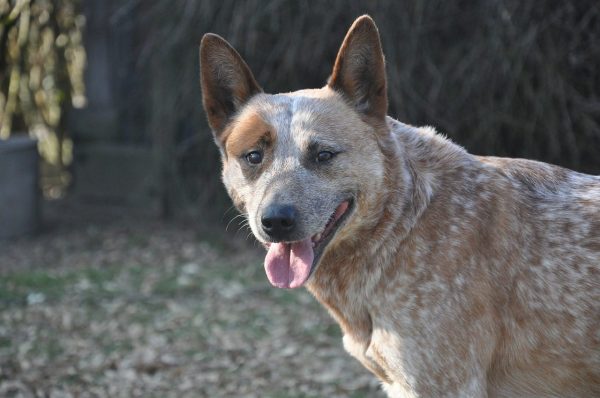
ACDs have double coats with a thick undercoat. This causes them to be moderate to heavy shedders. In most cases, they shed twice per year. However, in some cases, they can be year-round shedders. They shed the most during spring and fall. During these times, their coat will shed in clumps. This process is known as blowing. The good news is that shedding can be minimalized with the right care and preparation.
The best place to start is with regular brushing as well as regular baths. It’s important to keep in mind though that bathing too frequently can lead to skin dryness as well as other issues. Also, it’s important to avoid excessive brushing because it can remove too much fur at once as well as lead to a brush burn on the skin. As a general rule, you should not do more than 10 brush strokes in the same area at a time.
Believe it or not, diet also plays a role in the amount of fur ACDs will shed. While high quality food may be a bit pricey, it will keep your furry friend happy as well as help keep your house clean. Also, you may want to consider adding salmon oil, flaxseed oil, or olive oil to their food.
8. Behavior Issues
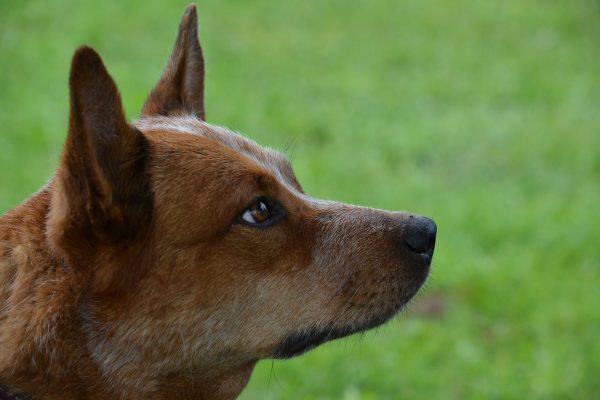
Before you bring home an ACD, there are some behavior issues that you should be aware of. For starters, there is a possibility of aggression towards strangers. This is a result of their protective nature. Other behavior issues that can occur include aggression towards other animals of the same sex as well as chasing, nipping, and excessive barking.
They are also known for being stubborn and manipulative at times. For this reason, they need a stern human that is able to make it clear that they are the boss. Thankfully, ACDs have a high level of intelligence which makes them very trainable as long as their human remains consistent and has patience.
9. Training
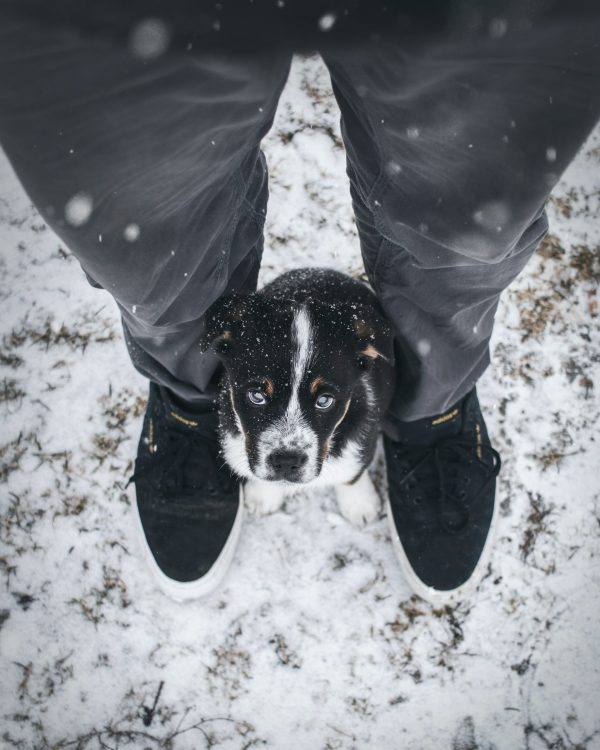
ACDs are easily trainable due to their history. However, there are some tips you should be aware of for the best results possible.
For example, socialization from an early age is extremely important when possible. This will help reduce the risk of aggression towards other people or animals. When socializing, it’s crucial that you ensure that your furry friend is comfortable. Failure to do so can make socialization a negative experience that will create negative behaviors in the future.
Curbing the urge to nip and bite is also an important part of training. This can be done by redirecting your fur baby’s attention with a suitable toy and positive reinforcement. Another effective method to curb this behavior is to avoid over stimulation. ACDs tend to nip most when they become excited.
Creating clear rules and boundaries should also be one of your top priorities. ACDs become easier to train once you have gained their respect and they understand that you are the boss. If they think they can get away with something they will. So, remaining consistent with your rules is highly important.
Last but not least, you should never use methods such as shouting or using physical punishment with this breed. Doing so can lead to trust issues between you and your fur baby. Instead, use positive reinforcement whenever your pooch does something you want it to and make sure to offer a reward immediately. Training sessions should also remain short and always end on a positive note so the experience will be enjoyable for both you and your furry friend.
10. Toys
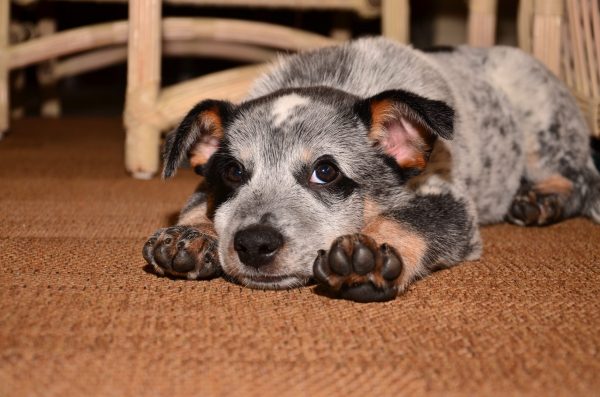
Being such an active and energetic breed, it’s very important that you provide you ACD with plenty of toys to keep them busy and engaged. However, choosing the right toys is just as important as the toys themselves. Typically speaking, the best toys for this breed are those that keep them mentally stimulated and burn off energy such as chew toys, puzzle toys, and tug toys.
Frequently Asked Questions:
When Do Blue Heelers Calm Down?
In most cases, this breed begins to settle down around the age of 4-6 years old. However, with the right training, this breed can be settled down at a much younger age. Their high levels of energy can also be burned off with adequate exercise as well as plenty of play time.
Are Blue Heelers Aggressive?
In some cases, this breed can become aggressive towards strangers as well as other animals, especially when it comes to those of the same sex. Early socialization is key to curbing these behaviors. On the other hand, they are typically very affectionate, loving, and loyal to their family.
What Is The Difference Between A Blue Heeler And A Queensland Heeler?
You might be surprised to learn that both dogs are actually from the same breed. The only difference between the two is the blue tint that a blue heeler has in its coat. Besides that, they are exactly the same.
Are Queensland Heelers Good Dogs?
Absolutely. They will go out of their way to protect your home and please you in any way possible. However, they may not be the best breed for a beginner dog owner as they need a lot of attention, exercise, and above all proper training.
Do Queensland Heelers Bark A Lot?
In some cases, yes. Due to their history, they are used to ward off predators from herds of cattle and sheep. For this reason, they do tend to bark when strangers come around or when they hear noises. This behavior can be curbed in most situations with redirection training, but the likelihood of them not barking at all is slim to none.
